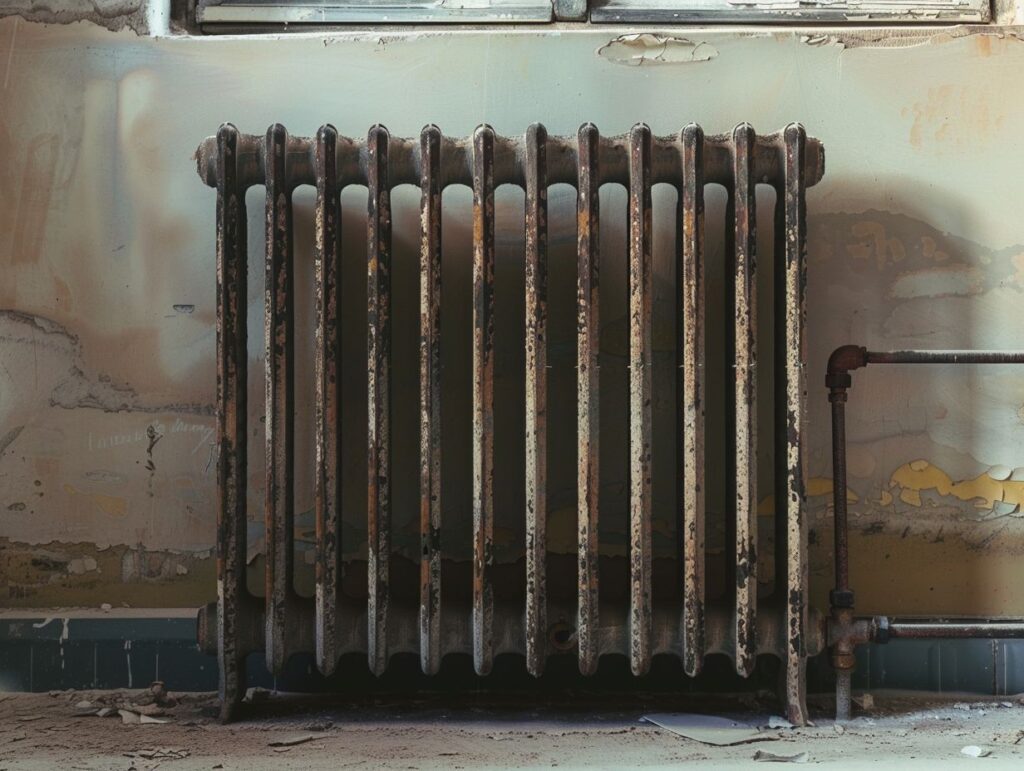Traditional radiators are a staple in many homes, providing warmth and comfort during colder months. Have you ever stopped to consider the materials that make up these essential fixtures?
The various materials used in traditional radiator construction include cast iron, steel, aluminium, and copper. In this exploration, we will delve into the advantages and disadvantages of each material and discuss factors to consider when selecting the appropriate material for your traditional radiator.
Let’s delve deeper into these crucial components of home heating.
Key Takeaways:
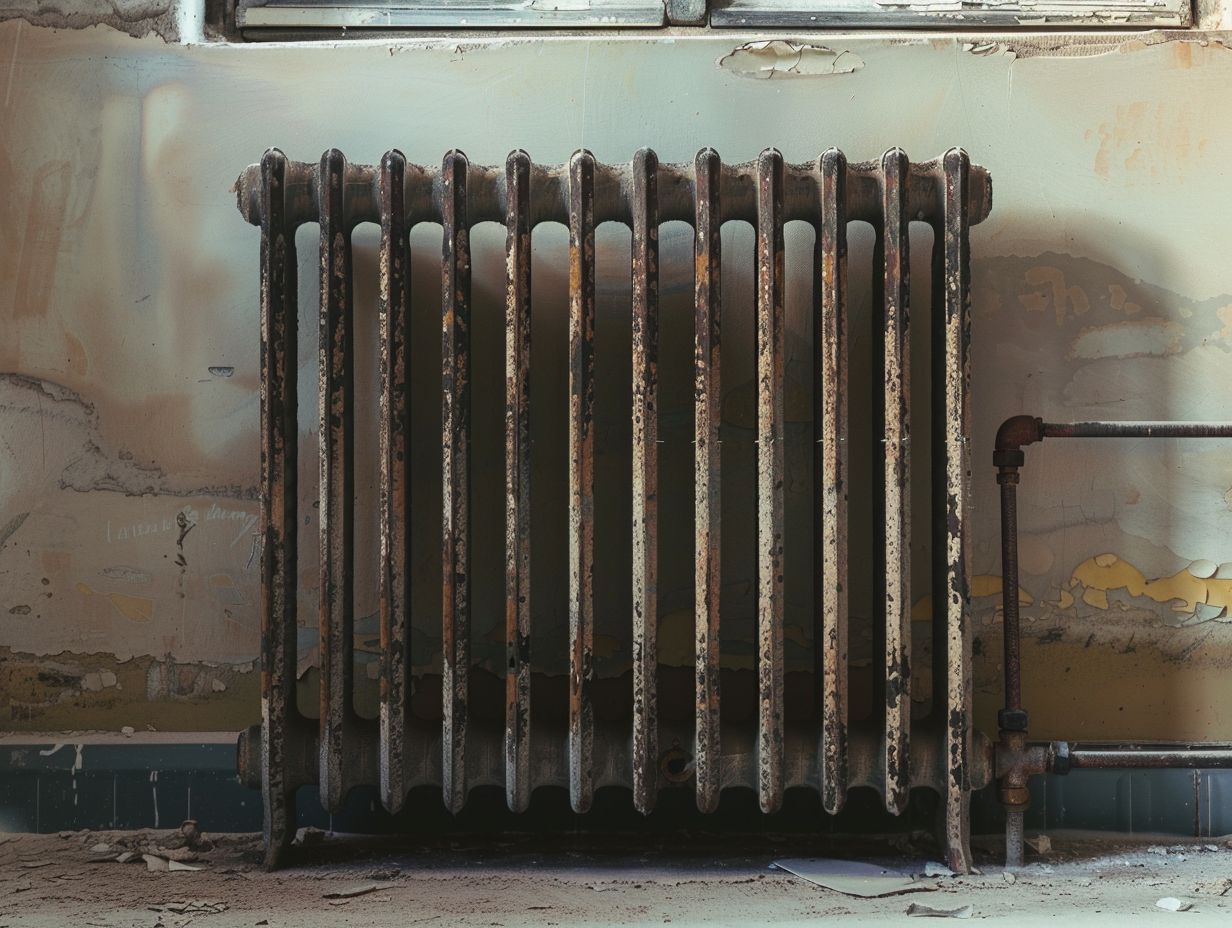
- Traditional radiators are made from a variety of materials, including cast iron, steel, aluminum, and copper.
- Each material has its own unique strengths and weaknesses, making it important to consider factors like cost, efficiency, and appearance when choosing the right one.
- Cast iron is known for its durability, steel for its affordability, aluminum for its lightweight design, and copper for its excellent heat conductivity.
Materials Used in Traditional Radiator Construction
When constructing traditional radiators, a diverse range of materials is utilised to guarantee effective heat distribution and long-lasting durability. The choice of materials is of utmost importance as it greatly influences the performance and lifespan of the radiator.
Cast Iron
Cast iron radiators are renowned for their classic charm and robust build. They are favoured for their exceptional heat retention and even distribution, making them a popular option for traditional heating systems.
These radiators are highly regarded for their longevity, capable of lasting for decades with minimal upkeep. Their thermal characteristics enable efficient heating, ensuring consistent warmth within a room.
From an aesthetic perspective, cast iron radiators bring an element of sophistication and nostalgia to any setting, complementing both contemporary and vintage interior designs. It is worth noting that their weight can present challenges during installation and potentially increase overall expenses.
Nevertheless, many homeowners choose cast iron radiators for their timeless aesthetic and enduring performance.
Steel
Steel radiators are recognized for their efficient heat transfer properties and diverse design options. They offer rapid heating and are well-suited for modern room settings. The high heat conductivity of steel radiators enables fast and even distribution of warmth, ensuring a warm and comfortable environment quickly.
Their performance efficiency is unrivaled, as they can promptly adapt to changes in temperature control, delivering precise and consistent heating throughout the area.
Steel radiators are cost-effective due to their long-lasting durability, requiring minimal maintenance and providing energy efficiency. Their design versatility allows for seamless integration into various room layouts, optimising space utilization while enhancing the visual appeal of any interior.
Aluminium
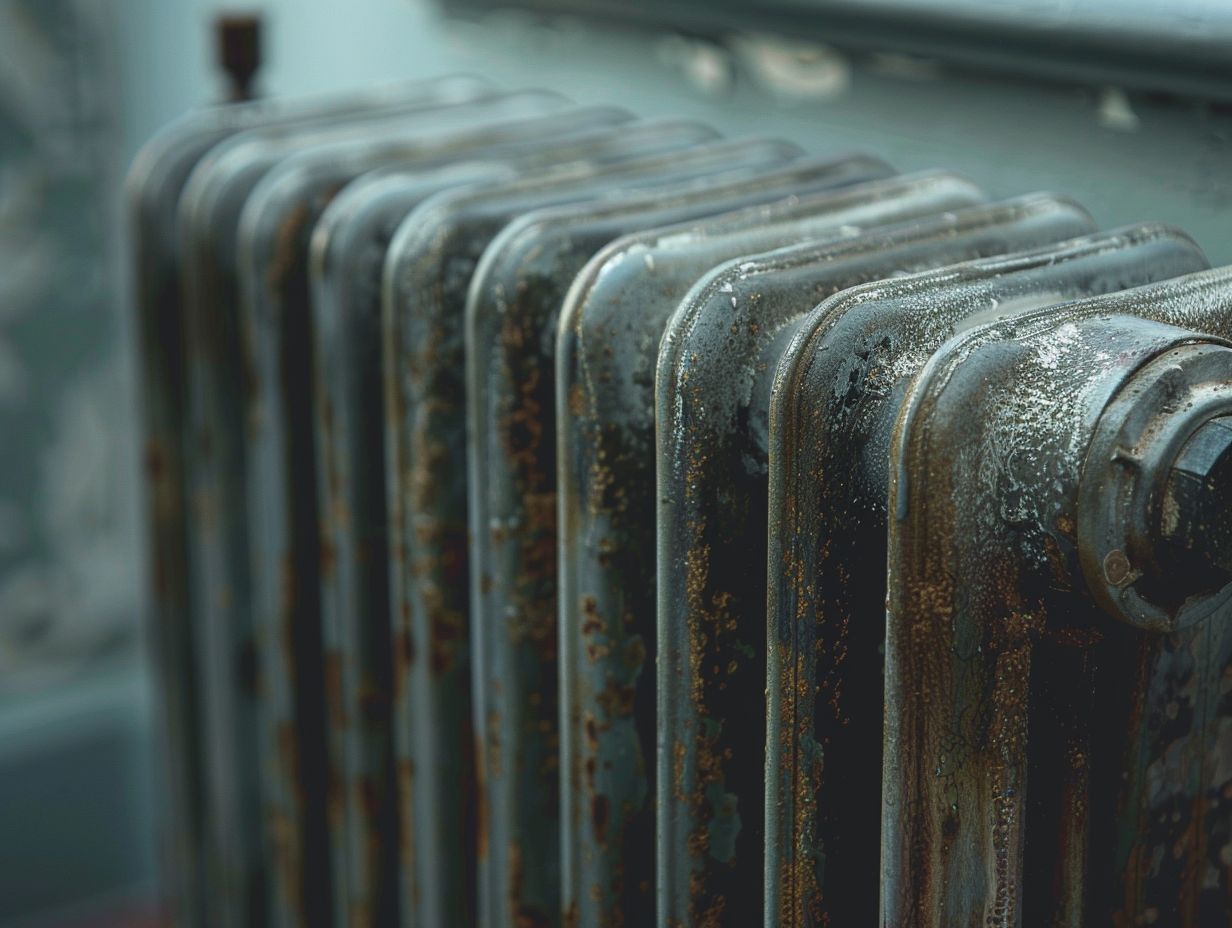
Aluminium radiators are lightweight, efficient heating solutions that offer fast heat conduction and are environmentally friendly due to their recyclable nature. Their lightweight construction makes them easy to install and handle, providing flexibility in positioning within a room.
The quick heating response of aluminium radiators ensures immediate warmth when needed, leading to potential savings in energy consumption. Their durability guarantees a long lifetime, reducing the need for frequent replacements.
With their eco-friendliness and ability to be recycled, aluminium radiators contribute to sustainable living practices and a reduced environmental impact.
Copper
You should consider copper radiators for their exceptional thermal conductivity and corrosion resistance, which make them highly efficient heat exchangers in traditional heating systems.
Their remarkable thermal conductivity facilitates quick and effective heat transfer, helping to maintain consistent room temperatures. Copper radiators boast impressive corrosion resistance, ensuring durability and reliable performance over the long term.
The intricately designed water pathways in copper radiators are key to their efficiency, maximising heat distribution.
Additionally, their insulation capabilities contribute to energy efficiency by retaining heat within the system and reducing energy consumption for heating purposes. This unique combination of properties has established copper radiators as a popular choice for both residential and commercial heating systems.
Advantages and Disadvantages of Each Material
Each material used in traditional radiator construction has its own range of advantages and disadvantages. It’s essential for you to understand these factors when choosing the right radiator for your heating needs.
Strengths and Weaknesses
When evaluating traditional radiator materials, you must consider their inherent strengths and weaknesses as they have a significant impact on the overall performance and reliability of the heating system. Materials such as cast iron, steel, aluminium, and copper each offer unique benefits and drawbacks when utilised in radiator construction.
- Cast iron is renowned for its exceptional heat retention capabilities, making it a preferred choice for distributing warmth evenly throughout a space. However, it is prone to corrosion and is heavier than other materials.
- Steel radiators are known for their durability and efficient heat transfer, but they can be vulnerable to rust if not properly maintained.
- Aluminium radiators are lightweight, heat up quickly, and are highly recyclable. However, they may not retain heat as effectively as cast iron.
- Copper radiators exhibit excellent thermal conductivity, longevity, and corrosion resistance. Nevertheless, they are typically more expensive and require regular polishing to uphold their shine.
Factors to Consider When Choosing Material for Traditional Radiators
When selecting a material for traditional radiators, you should carefully consider factors such as cost, efficiency, and appearance to ensure optimal heating performance and design harmony.
Cost
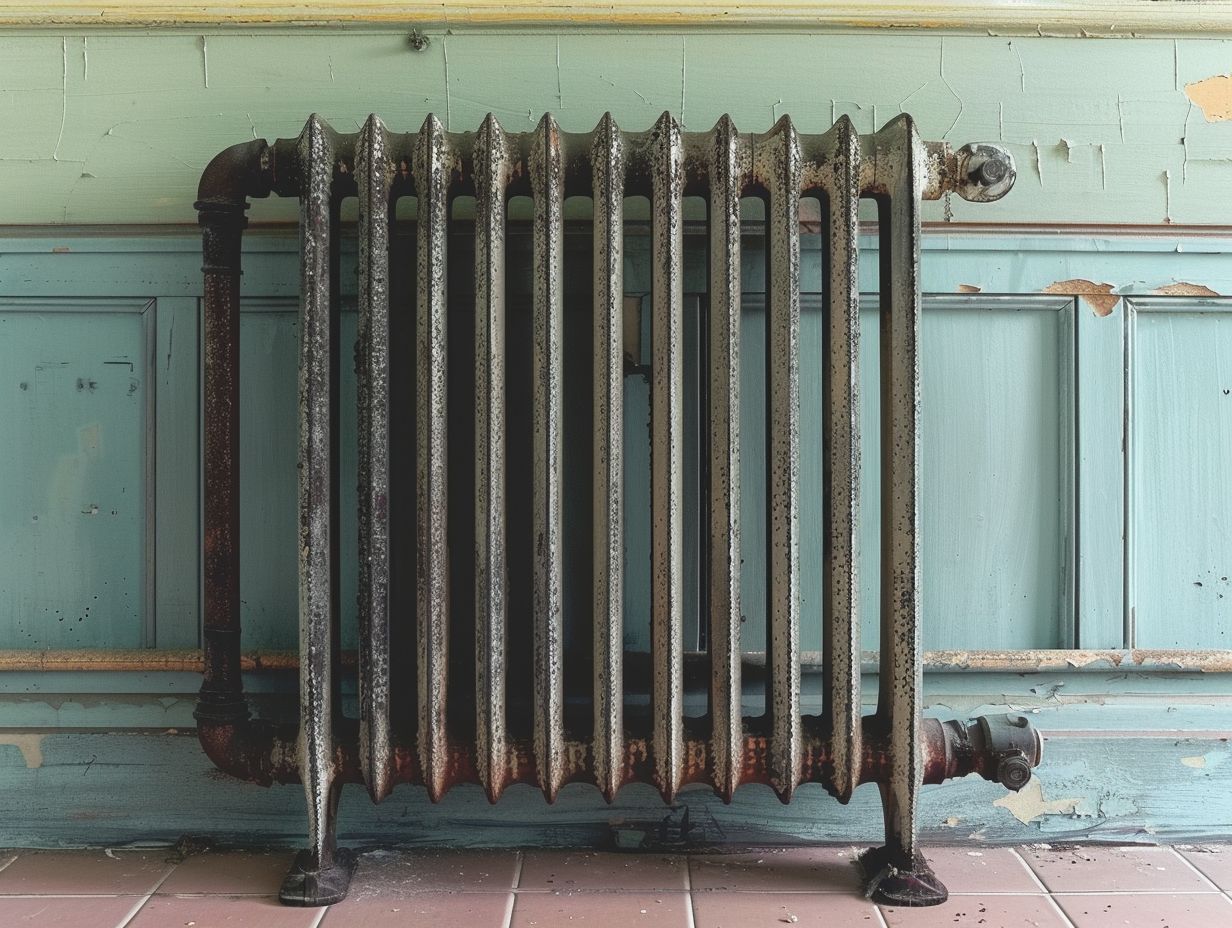
When you’re evaluating traditional radiators, it’s important to consider the comprehensive cost analysis which encompasses the initial purchase price, ongoing operational expenses, and maintenance outlays. This holistic view is fundamental for making a well-informed decision.
As you assess the upfront financial commitments, it’s crucial to not only account for the radiator’s price but also any associated installation fees that may be incurred. The materials used in radiators can vary significantly in both cost and efficiency, influencing the operational expenditures in the long term.
For example, while certain materials may come with a higher initial price tag, they could result in cost savings over time due to improved energy efficiency. By carefully examining the diverse range of radiator options available in terms of durability and heat retention capabilities, you can effectively optimise your financial savings in the long run.
Efficiency
The efficiency of traditional radiators plays a crucial role in heating performance and energy consumption. When selecting a radiator material, it is important to choose one that maximises heat transfer and energy efficiency to ensure a cost-effective heating system. Various radiator materials offer different benefits in terms of heat performance, energy conservation, and operational effectiveness.
For example, cast iron radiators are recognised for their exceptional heat retention properties, making them highly efficient in maintaining room temperature. Conversely, aluminium radiators heat up rapidly, delivering quick warmth to the space.
It is essential to consider the environment and the heating requirements of a specific room when choosing the appropriate material for radiators. This ensures optimal heating quality while also conserving energy.
Appearance
When selecting traditional radiators, consider the impact their appearance will have on the room’s overall aesthetic. It is important to choose a material that complements the design and décor of the space to create a cohesive and stylish heating solution.
Different materials for traditional radiators offer a variety of design options, allowing you to not only regulate heat output but also control the visual effect in your room.
Whether you prefer classic cast iron radiators for a vintage touch or sleek modern steel models that seamlessly blend with contemporary decor, your choice of material significantly influences the ambiance of the room.
Factors such as ease of installation, maintenance requirements, and the impact of each material on temperature distribution should be considered when selecting traditional radiators. By taking these factors into account, you can design a functional and harmonious interior space.
Frequently Asked Questions
What Materials Are Used in Traditional Radiator Construction?
The most common materials used in traditional radiator construction are cast iron, steel, and aluminium. These materials are known for their durability and heat conductivity, making them ideal for use in radiators.
Are all parts of the radiator made of the same material?
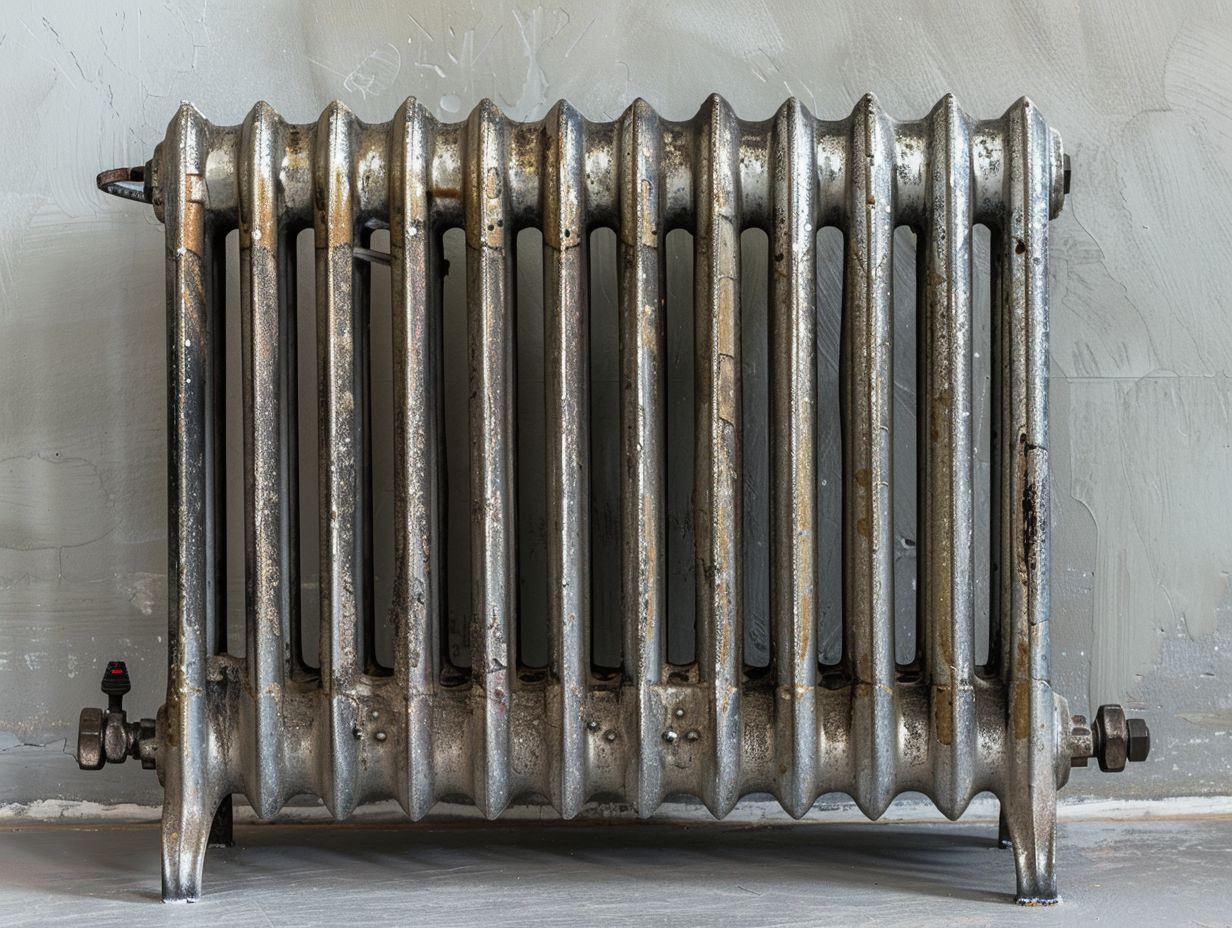
No, typically the body of the radiator is made of cast iron or steel while the fins or tubes that transfer heat are made of aluminium. Some radiators also have brass or copper components.
Why are cast iron and steel commonly used in traditional radiators?
Cast iron and steel are popular choices for radiator construction because of their strength and ability to retain heat for a long period of time. This allows for consistent heat output and efficient energy usage.
What are the advantages of aluminium in radiator construction?
Aluminium is a lightweight and highly conductive material, making it ideal for use in transferring heat from the radiator. It also has a low melting point, making it easier to mould into intricate shapes.
Do traditional radiators use any other materials besides metal?
Yes, some traditional radiators may use ceramic materials in their construction. These radiators are known for their aesthetic appeal and low maintenance requirements.
Are there any eco-friendly materials used in traditional radiator construction?
Yes, some manufacturers offer eco-friendly options such as recycled aluminium or steel for radiator construction. These materials are not only more sustainable, but they also offer the same level of durability and heat conductivity as their non-recycled counterparts.

